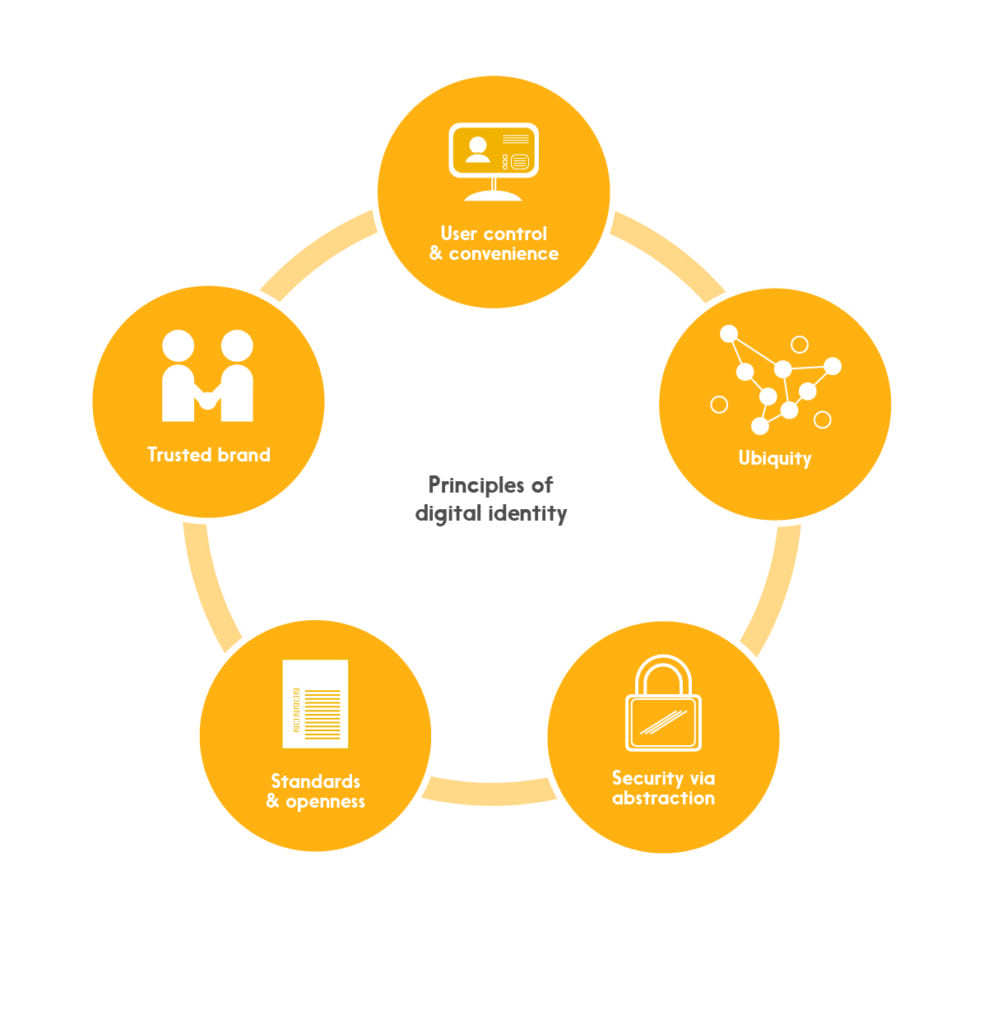Improving service delivery for growing towns and growing businesses.
Reducing the overhead costs of licensing, compliance, and reporting can help local economies grow faster and can encourage the formation of a municipality’s small business sector.
Introduction
It’s been a long time since most Canadian cities and towns were small enough that their municipal governments knew the local business owners by name. Bureaucracy has scaled in response to growth in municipal size, and with this scaling has come an even larger growth in paperwork and processes. For a business first setting up in (or moving to) a new location, numerous and often lengthy forms have to be filled out to obtain necessary services (e.g. licensing, building permits, land use)—with each form requiring the sharing of similar identity information.
This administrative overhead places pressure not only on smaller businesses—who lack the size to be able to assign such paperwork to administrative staff or lawyers—but also on smaller municipalities, which have often inherited “big city” processes without the tax base necessary to staff them appropriately.
Unsurprisingly, there’s a new push today in the direction of digital service provision. Reducing the overhead costs of licensing, compliance, and reporting can help local economies grow faster and can encourage the formation of a municipality’s small business sector—as well as helping ensure that small businesses grow up to be established businesses that offer stable, long-term employment to residents.
In this white paper, we’ll look at how digital ID can help municipalities deliver business-facing services more effectively and efficiently by accepting pre-verified identity information, and how it can help businesses save both costs and time.
Municipal services in Canada
Paperwork and processes have been vital to keeping track of information about municipal services and service recipients like businesses. Too much, however, can be counter-productive. Businesses and Canada’s many fast-growing towns and suburbs will be first to benefit as digital delivery (with digital ID) trims red tape.

2. Municipalities in Canada with the largest and fastest-growing populations between 2011 and 2016, Statistics Canada (2017
How digital ID helps
Municipalities
- Digital ID improves the administrative efficiency of municipal service delivery by proving identity without delay or paper documentation.
- Digital ID authenticates submitters and thus improves the likelihood of fees payment (especially if combined with a “good funds” digital payment model).
- Digital ID may encourage the creation of new businesses through streamlined registration processes, helping them to thrive by reducing overheads—and ultimately growing the tax base.
Businesses
- Digital ID reduces the burden of regulatory compliance by enabling simple digital processes, thus lowering costs and freeing up time better spent on the businesses themselves.
- Digital ID improves privacy and security, ensuring that businesses can consent to sharing their private information with municipalities under constraints that they themselves control.
- Digital ID enables faster speed to market, by simplifying paperwork and reducing response and approval times by a municipality’s administration.
Getting a business license with digital ID
Step 1: Sign in
The sole proprietor of a new restaurant, Kaitlyn signs into her town’s online portal, authenticating herself with the digital ID stored on her device. This gives her access to a range of municipal services without having to re-authenticate.
Step 2: Fill in new license application
She initiates a “new business license” session and fills in the online form, her work made easier by the pre-population of several fields drawn from her digital ID and from the municipality’s database.
Step 3: Grant access to additional information stores
The online process requires her to present proof of business insurance and a clean criminal record check. Rather than having to physically pick up such documents (or wait for them to arrive by mail), she simply grants consent to the municipality to access the same information digitally and immediately—and on a one-time basis only.
Step 4: Submit application
This done, Kaitlyn completes the rest of the license application inside the portal and hits “submit”. Within seconds, she receives a digital version of her approved business license (a physical version will come in the mail later). She’s one step closer to opening her restaurant.

Consent
One of the most important features enabled by digital ID is the ability to grant consent to other parties to access one’s private data or a subset of it. The best systems allow a user to revoke such access once a task has been accomplished (“one-time” access), or after a pre-determined period has elapsed
Our principles
Digital identity is easy to theorize about, but architecting and implementing a comprehensive, secure, and sustainable system is another matter entirely – and an important part of getting it right is having a clearly articulated set of principles to guide the effort. We believe that there are five:
User control & convenience
No one wants to entrust a system with their personal details if those details are going to be transferred to and stored by numerous parties – especially if this happens without the user’s knowledge and express consent. While ensuring user control, an identity system must also be convenient and easy; if it isn’t, it won’t be adopted by users, many of whom are already used to intuitive apps on mobile devices.
Standards & openness
In any dynamic system, it’s difficult to predict what the future will look like – so it’s important to build today’s solutions on universally-agreed standards. Not only does this reduce costs by eliminating the expense of building and then later having to adapt custom, one-off solutions, but it enables solutions built by others in the future to “plug into” the initial solution. Openness encourages adoption, innovation, and flexibility.
Ubiquity
Security risks abound when people create different identities and passwords for each public and private service they access. They’ll often default to a single, easy-to-remember (and easy to crack) password, for example. At the same time, a digital identity that only applies to a handful of services will probably not be well- adopted. A ubiquitous system is a more convenient and a more secure system.
Trusted brand
No user is likely to adopt an identity solution built or maintained by an organization they don’t trust. The question of identity is simply too important, and the impact of identity theft too great, to leave this to chance. Further, building a large-scale (and ubiquitous) solution will require the cooperation and coordination of many players, and these players need to trust each other and the organization leading the effort.
Security via abstraction
Even with the best user controls, a certain amount of identity data must be part of transactions in any given ecosystem. A highly effective way of securing that data is to “abstract” it, by replacing a private identifier with a publicly available one (like a person’s email address) or by replacing it with a randomized number that serves as an authorized “token” for the purposes of the transaction – and is not useful for any other purpose.

Conclusion
Fast-growing municipalities and fast-growing businesses share a common interest in the deployment of service provision models based on digital delivery and secured via digital ID. Such solutions promise to make municipal administration more efficient, to improve revenue collection, to boost privacy and security for local firms, and to help businesses grow faster as regulatory overhead is reduced.
Numerous sectors, both public and private, are similarly poised to benefit from digital ID technologies based on a foundation of sound principles. The next few years will see the realization of these benefits in the form of healthier cities and towns, healthier local economies, and more prosperous Canadians.
If you’re interested in collaborating with Interac on the future of Digital ID, drop us a line at digitalid@interac.ca
Fast-growing municipalities and fast-growing businesses share a common interest in the deployment of service provision models based on digital delivery and secured via digital ID.



